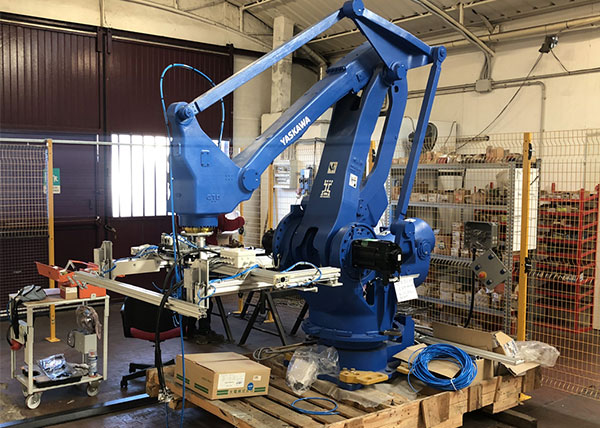A new project for the wood sector: loading of MDF panels
This project was born from the need to automate and operationalise a platform of MDF work of panels. The goal was to make it able to perform the processing of a pantograph at two levels of milling.
The real challenge was to not only operate the charge and discharge of the platform, but also to clean the milling plane, before processing a new load.
As always, the interlocking system will be placed side by side with a processing system, with an already installed pantograph.
Customized solution for the client
Currently, the system is manually enslaved during all the loading and unloading phases: this involves various technical and human problems: the first problem that the customer presented to us is linked to the loading speed of the pieces into the machine and second place, problems of human nature: the weight of the pieces and the repetitive movements, are some among the causes of accidents in the workforce and therefore can lead to a serious criticality in the flow of production and working times.
The client asked for the cleaning of the working area between charges and in particular the milling plane, to eliminate sawdust, powder, waste and other residue.
Given the timing of load and unload, the cleaning function was applied directly to the gripper. It aspirates the lighter residue between the two phases, bringing it to the powder storage facility of the Company. Thanks to two brushes placed on the sides of the gripper, it removes the powder without entering the security cell.
Sartorial organ
The checks and the choice of the right system, in terms of load, power, maneuvering space and precision in repetition, are just some of the characteristics that are the basis of the construction of the system.
The second and fundamental need in the construction of the system is the choice of the gripping organ, tailor-made for each production, in order to operate in concert with the robotic arm and perform the correct gripping maneuvers, evaluation of the surrounding space, and deposit of the finished piece on the outgoing pallet .
For the purpose of an automated production, the study of these formulas and the development of the operational sequences were the starting point of the project.
Safety first of all
The safety cell is another fundamental component that Bosso specifically studies to allow the system to operate in complete autonomy and safety, preventing injuries to the human component or damage to the surrounding structures .
In fact, thanks to proximity and contact sensors, if a person opens one of the safety gates or crosses the photocells placed in the access areas when the system is active, this will immediately deactivate.
Bosso considers it essential that the safety of the systems and the certification of the latter before final testing and delivery to the customer are two essential components for the creation of a perfect system.
Are you interested in this solution?
Don’t hesitate to contact us!










